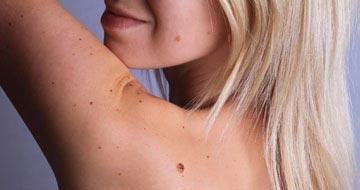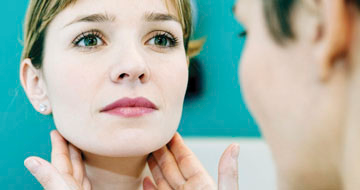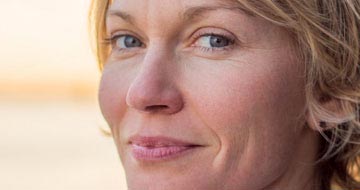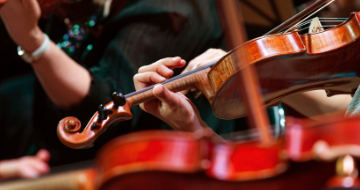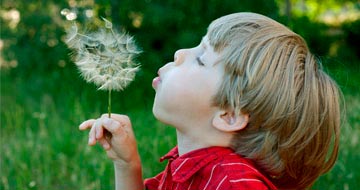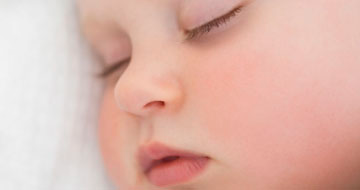
How do I know if my child has sleep apnoea?
Sleep apnoea is a fairly common condition in childhood, where a child momentarily stops breathing during sleep. Symptoms can include anything from loud snoring to night terrors, and in very rare cases it can have life-threatening implications. We talk to Ms Romana Kuchai, ENT specialist at The Medical Chambers Kensington, about the causes, diagnosis, and treatments for the condition.
Are there different types of sleep apnoea?
Yes – central sleep apnoea and obstructive sleep apnoea. The former, and far less common, is a neurological condition where breathing stops because the brain doesn’t transmit the right signals. Children with this diagnosis may have been born with a neurological or congenital problem. Obstructive sleep apnoea is where something (most typically large tonsils and adenoids) is obstructing the airways.
If my child snores, does this mean they have sleep apnoea?
Snoring in children doesn’t necessarily mean sleep apnoea. Sleep apnoea is part of a spectrum of conditions, called sleep disordered breathing. While all children with sleep apnoea will snore, what distinguishes the condition clinically are the episodes where breathing stops during the night. The severity of the sleep apnoea depends on the frequency of these episodes. The measurement of time when breathing stops correlates to oxygen levels in the blood.
What are the most common signs of sleep apnoea in children?
A child with enlarged tonsils or adenoids (the most common cause of sleep apnoea in children) might be prone to more infection. Therefore, a parent will usually notice that their child is unwell, and display symptoms such as a sore throat, lethargy, or a fever.
Sometimes snoring can be so loud that a parent can hear it from another room, meaning they’ll be checking on their sleeping child more often. Most parents who’ve noticed symptoms such as these on a regular basis will come to my clinic with video footage of their child when they’re asleep, so they can show me.
What are less obvious signs?
There are other things that a parent may notice, too. A child with obstructive sleep apnoea can have behavioural problems, because when breathing stops, the brain doesn’t get enough oxygen. This, paired with feeling tired during the day, will mean they often have difficulty keeping up at school.
Bed-wetting can be a symptom too, because of a child’s erratic sleep patterns. The first thing we explore when a parent comes to me is: is an issue with sleep causing these problems?
How would my child get a diagnosis for sleep apnoea?
We would need to carry out a sleep study Clinically, we could call a condition sleep-disordered breathing or obstructive sleep apnoea, but to make a diagnosis with absolute certainty, a sleep study would allow us to measure oxygen levels in the blood and air flow through the nose and the mouth.
Sleep studies can vary from very simple pulse oximetry – where we measure the child’s pulse through their finger to read heart rate and blood oxygen levels. This test has a very low diagnostic value but it’s simple and can be easily carried out at home.
A more conclusive sleep study is polysomnography, which involves a variety of measurements: oxygen saturation in the blood, airflow through the nose and mouth, plus brain activity and eye and limb movement during sleep. It monitors stages and cycles to determine if or when sleep patterns are disturbed, and why.
Electroencephalogram (EEG) measures brain activity to determine what stage of sleep someone is in. So we can correlate findings to work out if there may be other reasons why a child has difficulty breathing at night, that may not necessarily be obstructive.
Will my child have to go to a sleep clinic to have these tests?
Because of the specialists, equipment and monitoring required, most of these tests will be done on a sleep ward or in a sleep lab. Sensors on the body will be monitoring heart rate, others will look at brain activity. As a child sleeps they will be measured continuously throughout the night.
Typically, is there an age that children’s sleep apnoea becomes apparent?
For the vast majority of children who have sleep apnoea (most commonly caused by large tonsils or adenoids causing) they would be diagnosed between the ages of 2-5 years old. However, some children display symptoms of the condition from birth.
If there are problems from birth, there are usually other factors that are affecting breathing. These can include craniofacial anomalies, various syndromes including Down Syndrome, or laryngeal problems.
How do I know if I need to see an ENT specialist for my child?
Most of my patients come through their GP. Of course, there are parents who do their own research because their child snores heavily or has recurrent tonsillitis, and they sometimes self-refer.
Is there a cure for sleep apnoea in childhood?
In an otherwise well child within a normal weight range, adenotonsillectomy (removal of the tonsils and adenoids) would be curative. But in cases where the child has a high BMI, although surgery will usually improve the condition, it’s unlikely to cure it. For these children, I would take a multi-faceted approach, combining weight loss and adenotonsillectomy.
How important is it to diagnose sleep apnoea in children?
Extremely! It can be life-changing for both parent and child. Those who come to see me might have lived for years with the type of sleepless nights usually reserved for only the first few weeks of a baby’s life. The whole family is sleep deprived!
Before a diagnosis, parents might have tried several avenues: they might, for example, have moved their child into their bedroom, in order to be able to observe them throughout the night. Or their sleep may be disturbed by constantly having to move them their child onto their side from their back, to mitigate breathing problems.
Apart from the health impact on the child, which can be huge, there is also a serious impact on the parents’ life, too, both psychologically and physically.
Visiting our London clinic
To make an appointment with Ms Romana Kuchai, please call 020 7244 4200 or make an appointment online.


